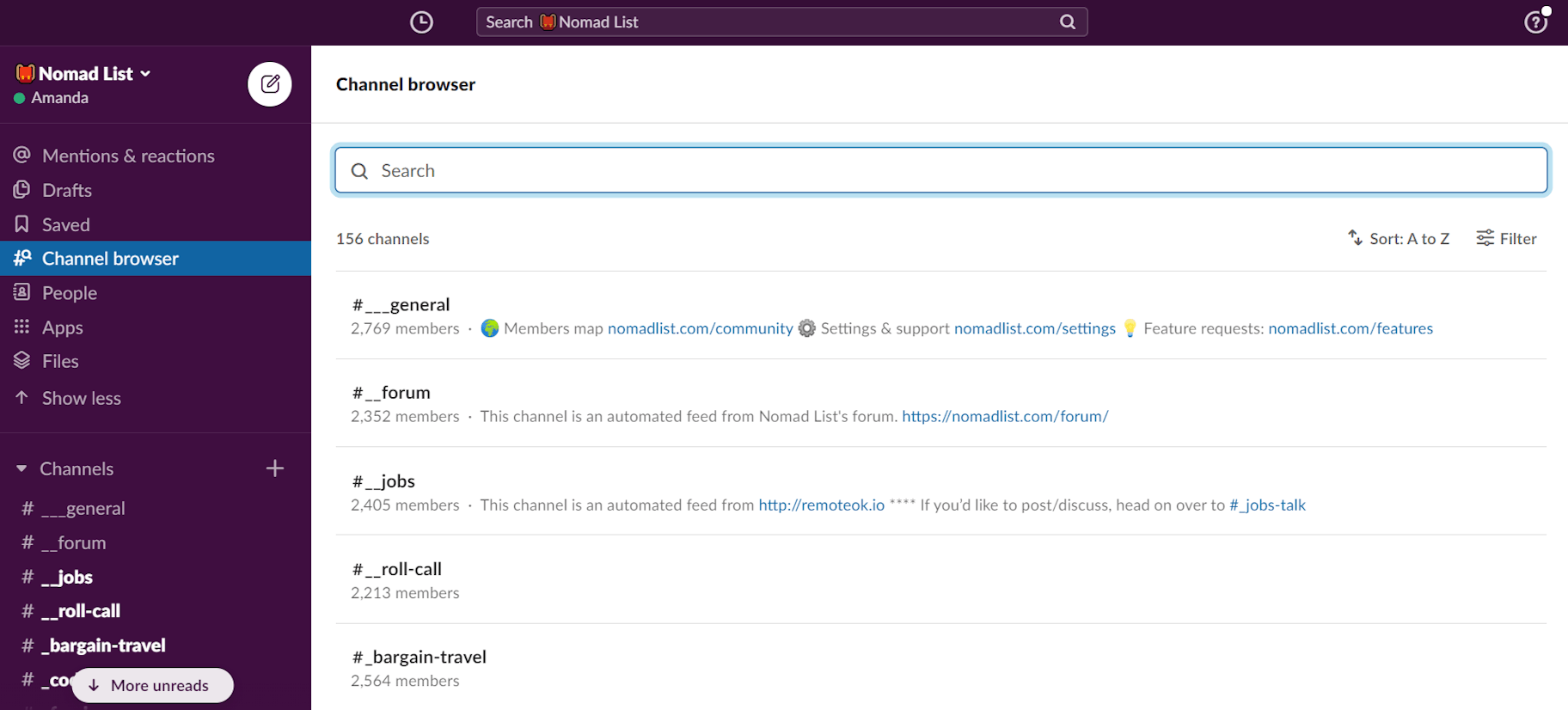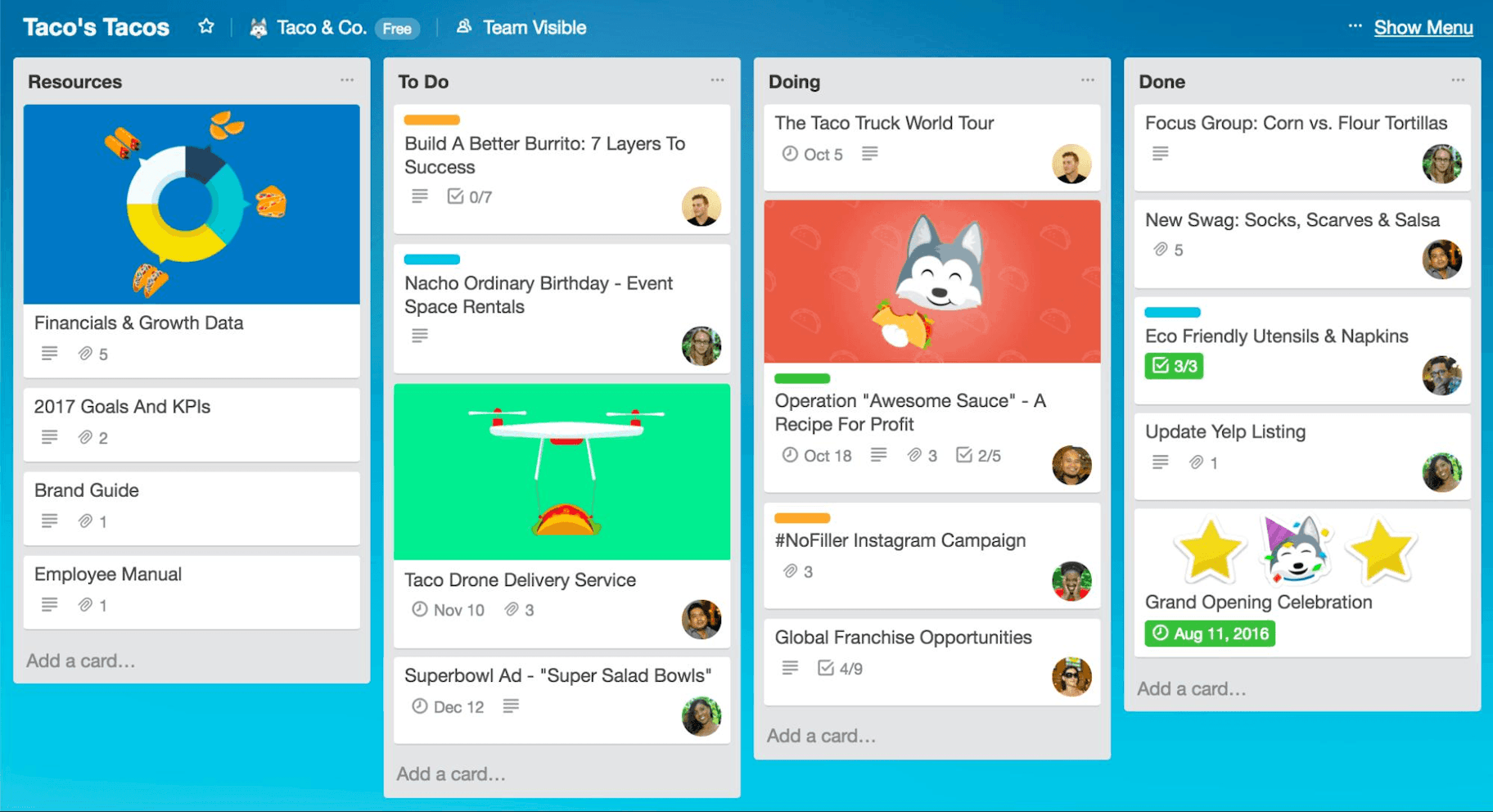Are you one of the millions of workers who recently dove head-first into remote work from home? Welcome to the crew.
There are a few categories you might fall into when you first start. Some people find out that they were totally made for remote work. Some have plenty of things they need to get used to. And there’s another category of people who feel like working remotely is complete anarchy and chaos.
But the good news is: Even if you’re in the last group, there are loads of tips, tools, and resources to help you get into the swing of things as fast as possible.
In this article, we’ll go over some tips and tricks on how to work smoothly with your team while making sure you stay productive and comfortable yourself. You’ll also get the lowdown on some of the best collaboration tools for remote teams and workers.
Ready to get productive? Let’s do this.
Post Contents



5 Keys to Success When Working Remotely
Whether you’re completely new to remote work from home, or you have some level of experience, there’s always room for improvement. Here are five things you should address to make sure that you’re setting yourself and your team up for maximum output and minimum madness.
1. Overcommunicate until you find your flow.
When you first dive into remote work from home, there will be a lot of things that need to be clarified – especially if there are several people who need to find a group flow in addition to finding their own personal flow.
And, of course, new needs will pop up that you never expected before.
→ Click Here to Launch Your Online Business with Shopify
Are you unsure about who will send out the meeting recap email? Ask your team. Have an issue setting up the new project management software? Get help. Afraid that a gap in your kids’ virtual classes will interrupt that big 2 p.m. meeting? Tell your boss, and try to find a solution together.
I can personally guarantee that you’ll have more issues than you can predict. But when you’re as proactive as possible, you’ll be in a much better position to handle things with stride and to ensure everything goes smoothly.

2. Use “playbooks” to keep everyone on the same page.
As you start using new tools and creating new ways of doing things, document them into “playbooks.” Write everything down in a place that’s easily accessible to everyone on the team. This can be in your fancy project management platform or something free and simple like a Google Drive doc or spreadsheet.
When everything is crystal clear in your playbooks, you and your team can be proactive instead of reactive. This means maximum efficiency, instead of constantly going through the same frantic steps of asking and waiting for things to be resolved.
Create as many playbooks as you need, and document as much as possible, including:
- The person or role that handles specific types of tasks, projects, and issues
- Step-by-step directions for how tasks and projects are completed, delivered, and reported
- What do when certain issues arise (document each issue as you identify and tackle them internally)
- The protocol for addressing urgent problems, like tech issues
You don’t have to be super strict about implementing everything to the T, but having everything laid out in clear detail will help those who need it when they need it.
3. Focus on accomplishing goals.
Everyone will need to find their own groove as they learn how to master remote work from home. That means that everyone will naturally vary in how they get things done and how much time they spend on certain tasks.
If you’re managing a team (or even just managing yourself), focus on the end goals and not as much on the path that’s taken to get to those goals.
This leaves leeway when it comes to finding out what works best for each person. It might seem like things are going slower at first, but everyone will thrive with different techniques and habits. Letting people figure out their own path is ultimately the best way to boost efficiency and productivity in the long run.
Of course, you’ll want to make sure people are following playbooks when you have them, but leave some wiggle room to accommodate different personalities.
4. Find creative ways to foster a sense of community.
At most companies, a part of the day becomes “watercooler” time, or time spent socializing outside of work stuff. eIn fact, the watercooler is a sacred place where coworkers can chat, laugh, and get a quick mental break from the day’s to-do lists.
If socializing with your coworkers is something you genuinely enjoy (and not just something you’re forced to endure), try to make sure you still get that team-building time with them. For example, one of my virtual clients actually made a Slack channel called “Watercooler” where we all chat, share articles and memes, and other things that are definitely not part of our job description.
This helps us maintain our sense of camaraderie and ensures that we can take our minds off work every now and then when we want some social interaction.
You might even want to consider having a virtual happy hour where everyone brings a drink and catches up via a video conferencing tool like Zoom or Skype. Of course, use your judgment here. Not every workplace is appropriate for a boozy mixer.

5. Pay attention to your workspace.
Your workspace can simultaneously be one of the disadvantages and benefits of working remotely. It can be awesome when your commute changes from a 20-minute car or train ride into a 20-second walk from your bed to your desk.
But if you’ve never worked from home before, you might not have all the gear you need to be perfectly comfortable. You might need to work at your kitchen table instead of having a private office. You might need to use a barstool instead of that classy swivel chair your company provided.
Even if it’s not ideal, there are ways that you can level-up your workspace to boost your comfort and productivity. At the very least, make sure you’re prioritizing your physical comfort.
Here are a few tips:
- Back problems? Try putting a pillow under your bum, using it as lumbar support at your lower back, or setting up a makeshift standing desk so you’re not sitting all day.
- Neck problems? If your neck hurts from looking down, try propping up your laptop on some books or buying a cheap stand.
- Declutter your space. Clear off your desk or table so that there aren’t any immediate distractions. You’ll be surprised at how much this can help.
4 Best Tools for Remote Workers
If you work for a company, chances are that they’ve already laid some groundwork for tools you and your team will use. In some cases, these tools are just an extension of what you used in the office.
But if you’re responsible for managing a team or you’d just like to be more efficient with the people or clients you deal with on a regular basis, check out these awesome tools that can really make a difference in your day-to-day life.
1. Videoconferencing tools
If you had regular in-person meetings, it might be tough to quit cold turkey. That’s why so many people are using videoconferencing tools. They’re among the best collaboration tools for remote teams, helping you maintain that sense of cooperation and collaboration even from your own homes.
Plus, most videoconferencing tools include handy features like screen sharing, which lets you easily show others what’s on your screen to walk through presentations or to-do lists. Other features include video recording to send out after calls as well as integrations with your calendar. Some tools like Zoom even have virtual backgrounds if your home workspace isn’t quite ideal.
Other popular video conferencing tools include:
2. Chat tools
Remote work best practices say to be wary of unnecessary calls. That’s why having real-time chat is one of the best collaboration tools for remote teams – you can still handle issues as they come up but without interrupting each other’s concentration or schedule.
Chat tools also help make sure that a five-minute issue doesn’t become a 20-minute call – which you’ve probably experienced the pain of before.
Here are some popular and proven chat tools:

Pro tip: While these tools can be a true blessing, beware of the point when they can become a curse. Some people are magical unicorns who never get distracted by people trying to talk to them all day while they’re in the zone. Most people can’t relate to this.
Check to see if your tool of choice has a “Do Not Disturb” functionality that turns off your team’s ability to poke you all day long. They’ll see that you’re not available, and you’ll be able to get those messages and loop back with them when it works for you.
Everybody wins.
3. Project management tools
If remote work from home means that you have to change the way you manage tasks and projects, it’s absolutely critical to make sure that everything stays organized and everyone stays accountable for their share. Otherwise, you’re practically asking for important tasks to be forgotten.
This is how project management tools save the day. They allow you to break big projects into the smallest possible building blocks and assign them out to team members with due dates and all the notes they need.

While there are some hardcore project management tools out there (think tools meant for international corporations), they’re not always necessary to get the job done.
Here are a few “starter” project management tools to explore:
4. Time trackers
While our previous items showed some of the best collaboration tools for remote teams, time trackers are really for your own benefit (or something you can share with others for their own benefit!).
These tools can be an immense help for staying productive, especially when you’re still learning how to juggle a million other things in your personal life on top of navigating work, too. You can start small with a simple timer, or use a more in-depth tool that can log time for different projects or track a whole team’s output.
One of my favorite simple tips for working remotely is to set a timer in 30-minute increments, and take five- or 10-minute breaks in between. By breaking up a long day into smaller, more digestible chunks, I can stay laser-focused on the task at hand instead of trying to dip my toes into too many things at once. (Or signing into Facebook to scroll mindlessly through my feed.)
Here are a few time-tracking tools for individuals and groups:
Learning How to Work Remotely Is All About Patience
As you’ve probably figured out by now, remote work from home is a completely different beast than what most of us are used to. If you’re feeling overwhelmed, frustrated, or burned out trying to find your own groove, just remember that your experience is completely normal.
The biggest element of the formula is time – you just need to keep trying until you find the guidelines, processes, and tools that work best for you and your team.
And if you’re feeling like you’re not being as productive or efficient as you thought you would by now, that’s normal, too! It’s not easy being thrown into the world of working remotely, especially if you have a big list of personal things to take care of on top of it all.
As you write out your daily to-dos, be sure to add “cut myself some slack” to your list. Good luck!






